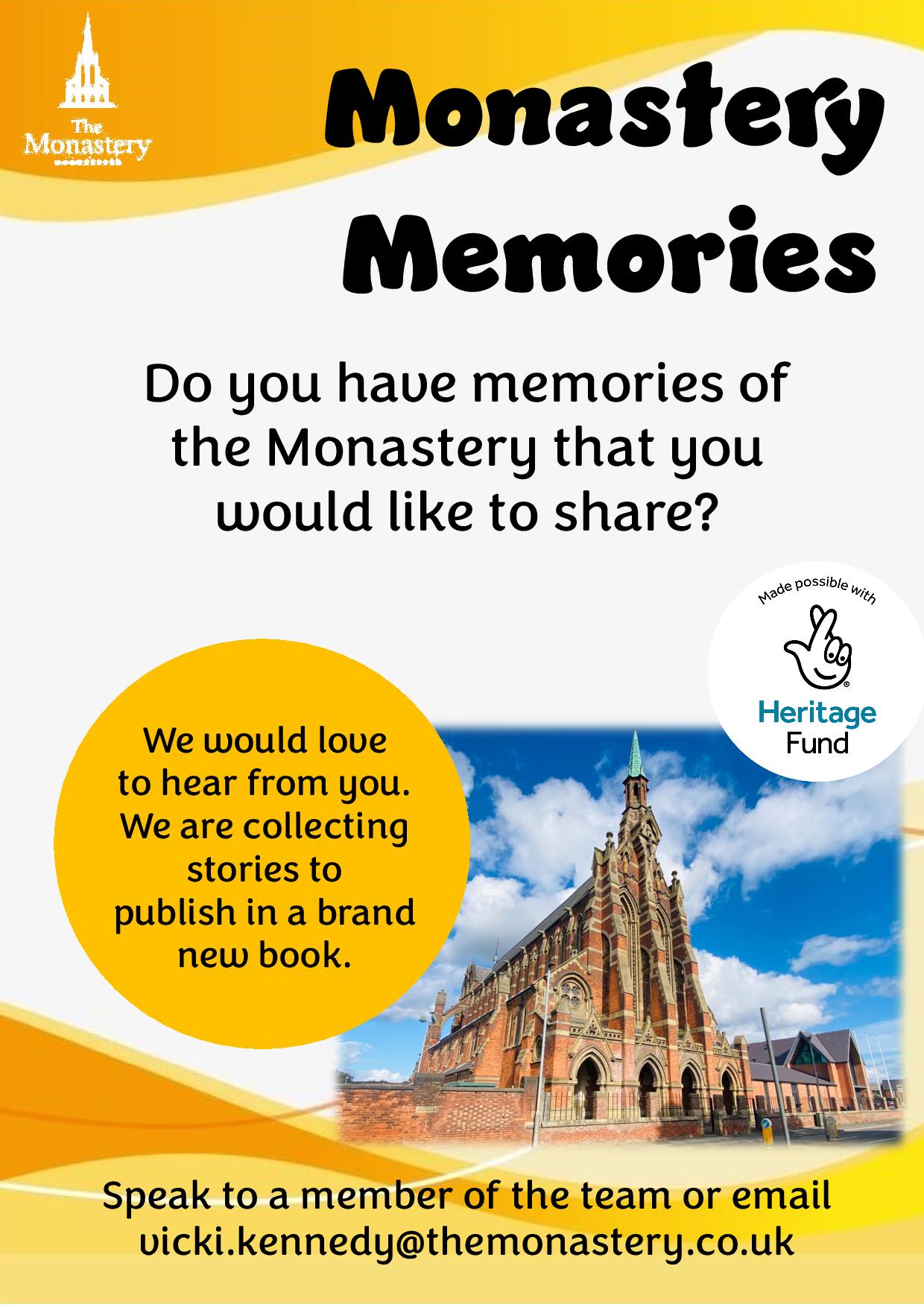Monastery Memories Project Now Launched
The Monastery Memories Project has now launched, with the aim of collecting memories of the Monastery, from people who remember the building from years gone by, as well as memories of the surrounding area.
Do you, or someone you know, remember the Monastery while it was still a Franciscan church, school and friary, or other Monastery memories that you’d like to share? If so, we warmly invite you to come in and chat with a member of the team so that these precious memories can be recorded.
We hope these memories, once collected, will eventually be turned into a book and potentially, a podcast.
For more information about this project or to book an appointment, please email [email protected]





























